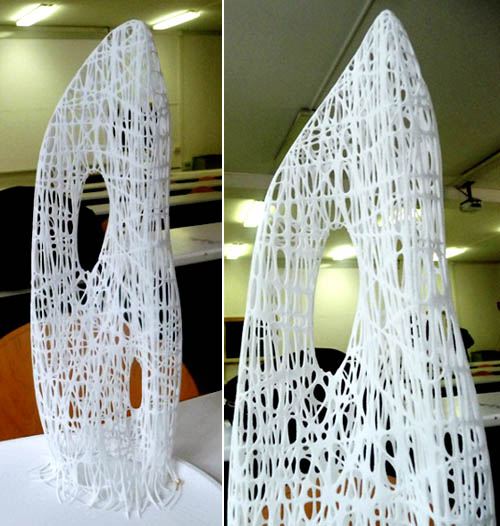 [Image: Thesis project by Vincenzo Reale, from a course taught by Alessio Erioli at the University of Bologna; photo by Alessio Erioli].
[Image: Thesis project by Vincenzo Reale, from a course taught by Alessio Erioli at the University of Bologna; photo by Alessio Erioli].
Here are two 3D-printed thesis projects from a course taught by Alessio Erioli at the University of Bologna; above you see work by Vincenzo Reale, below work by Riccardo La Magna. I have to admit to being utterly blown away by the formal possibilities of 3D printers, and these projects only make that obsession more extreme.  [Image: Thesis project by Riccardo La Magna, from a course taught by Alessio Erioli at the University of Bologna; photo by Alessio Erioli].
[Image: Thesis project by Riccardo La Magna, from a course taught by Alessio Erioli at the University of Bologna; photo by Alessio Erioli].
For one or two more images of these and other thesis projects, check out the Flickr stream of Alessio Erioli, where I originally saw these photos; for more on the future of (an admittedly different kind of) 3D printing, check out the recent, awesome article by Tim Abrahams in Blueprint Magazine: "In a small shed on an industrial park near Pisa is a machine that can print buildings," we read.
- The machine itself looks like a prototype for the automotive industry. Four columns independently support a frame with a single armature on it. Driven by CAD software installed on a dust-covered computer terminal, the armature moves just millimetres above a pile of sand, expressing a magnesium-based solution from hundreds of nozzles on its lower side. It makes four passes... The system deposits the sand and then inorganic binding ink. The exercise is repeated. The millennia-long process of laying down sedimentary rock is accelerated into a day. A building emerges. This machine could be used to construct anything.